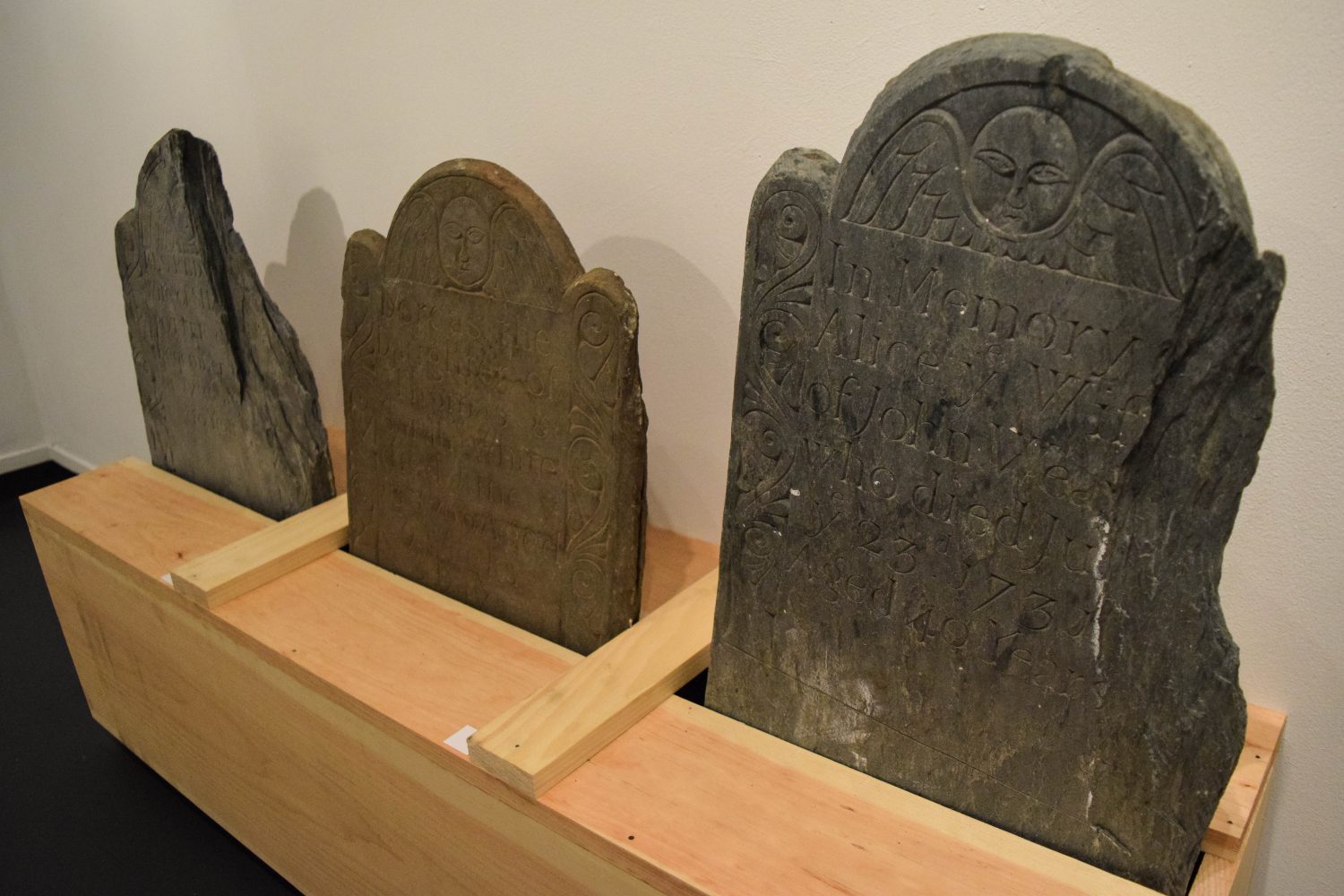“Momento Mori: Colonial American Lives in Stone” provides the University of Rhode Island community members with an in-depth understanding of a historic art form that can be easily overlooked. The special exhibition was curated by advanced art history students and faculty. The exhibit teaches community members about the generally unknown history and artistry of New England colonial gravestones.
This is the second gallery exhibit to be produced by the capstone art history seminar of the Department of Art and Art History. Several advanced art history students worked together, acting as a curatorial team, to put together the exhibit. Students Christina Horton, Liz Hurley, Mackenzie Lawler, Amy Levesque, Naama Malomet, Cynthia Sun, and Aemelia Techentin, all worked together to organize, research and write the text for the gallery during the past spring semester. They hung the exhibition pieces in early May as a “final hands-on task of experiential learning.”
“This is the earliest form of American sculpture,” said Ronald J. Onorato, Art and Architectural History Department Chair. “Each student took an area to research and discuss.”
“Marking a grave with a monument fulfills a deep anthropological need to designate a permanent burial place and create a place of pilgrimage to honor the dead,” reads the text on the wall written by Maloment, which opens the gallery.
The gallery is both informative and visually enticing, displaying several gravestones drawn and written on in different styles with text explaining the history and process of carving the stones. There is a rich history to the art and work of gravestones. Gravestones are generally inscribed with the name of the deceased and his or her date of birth and death. The style in which these stones are drawn or written are quite intricate and beautifully marked.
The gallery dives into the history of the colonial American grave markers, studying gravestones that came from their original locations during the 1970s. The removal of gravestones, even when taking with the means of preservation, is now illegal in Rhode Island. While the specific location of where the stones in the gallery came from is unknown, it is believed that they came from the Newport Common Burying Ground. In the past, gravestones have been returned to their locations when their original location can be determined, but the stones that could not be returned are used for educational purposes by the university’s Department of Art and Art History. Many of the stones were provided by The John Steven’s Shop of Newport, Rhode Island, one of the oldest running businesses for engraving and cutting stone. The John Steven’s Shop was founded in 1705 and still provides one of a kind inscriptions in stone.
During the 17th and 18th centuries, slate was the primary material used for gravestones. Some of the stone’s durability changes with the location from which it came, but generally slate can withstand the freezing temperatures of New England.
“Colonial carvers preferred it as a it is more suitable than softer stone for carving clean, sharp detail in inscriptions and tympanum or border designs,” reads Techentin’s text on the stone’s physical form. “They were most oriented east to west so that the faithful buried there could symbolically sit up and face east toward the first rays of the rising sun on resurrection day.”
Further text displayed in the gallery discusses the process of engraving the stones, as well as the lettering and symbols used for the inscriptions. Engraving is described as the “precise artistry of carving a design into a solid surface.” The letters on the gravestones are carved out using a V-cut “to create a more pronounced lettering, as two planes, carved at opposing angles, converge into a single V-shaped carving.” While this method is slow and detailed, it makes the inscriptions more legible.
Others who helped with the gallery include Professor Ben Anderson who coordinates the Experimental Gallery, Linda Mugica who assisted with some of the photographic documentation, Mary Malakorn who typed and formatted the wall texts and Jack Onorato (BFA ’15) who prepared the gallery and oversaw the installation. Jack Onorato designed and constructed the bins that were used to hold the gravestones upright for display.




